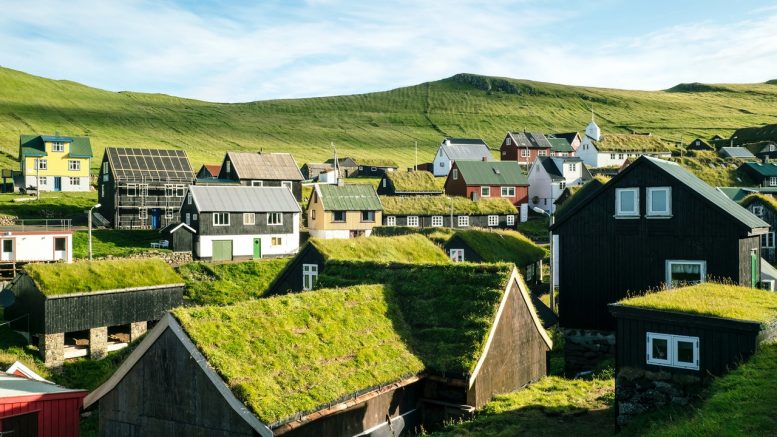Green roofs and vertical gardens are both becoming more popular as we attempt to create greener, cleaner buildings. In a Market Research Future report, it is estimated that the vertical garden construction market will grow annually at a rate of 8.2% over the next 5 years, and other green building trends are expected to see similar gains.
A couple of weeks ago, I mentioned the green roof at the Laurel Highlands Falls Area Visitor Center at Ohiopyle State Park which helps reduce runoff and insulate the building. Another great green roof example, not far from the Oil Region is at Cleveland Hopkins International Airport (CLE). CLE was awarded a grant in 2012 from the Ohio Environmental Protection Agency (EPA) and the United States EPA to install two green roofs, making CLE the first Cleveland city building to install green roofs.
The combined total of 7,300 square feet of green roof space at CLE is estimated to capture 120,000 gallons of stormwater per year in addition to reducing nitrogen, phosphorus, and sediment from entering the Rocky River and removing approximately 300,000 pounds of carbon dioxide from the air.
Green roofs and vertical gardens can also help to lower the heat island effect in urban areas. Heat islands are areas that experience higher temperatures than the surrounding area. This happens because buildings and roads absorb heat more than natural landscapes like water or trees. The temperatures in these urban heat islands can be 7° higher than temperatures in other areas close by.
In addition to the environmental benefits of green roofs and vertical gardens, they also maximize usable space. Both of these concepts can be implemented on a smaller scale at home. Globally, many cultures have used some combination of the two for thousands of years in their houses like the traditional turf houses in Greenland or the grass-roofed houses in the Faroe Islands where there are more grass-roofed houses than anywhere else in the world. At home, small buildings like sheds or partially subterranean structures like root cellars are good candidates for green roofs.
Like green roofs, vertical gardens can be part of a building as a green wall, and they can also be free-standing. Many plants lend themselves well to vertical gardening, and there are a variety of options from DIY pallet gardens to commercially available vertical hydroponics kits. Even trellising your squash is a form of vertical gardening.
If green landscaping interests you, I’d love to chat about any ideas you have! Stop in on Fridays in Foxburg from 1-3 pm. Weather pending, we will start out at Divani and then move up the hill for the last half hour at River Roots Community Farm located at AC Valley School District.
Rachel Brosnahan is the Community Engagement Coordinator for River Roots Redevelopment. She can be reached by email at rachel@riverrootsredevelopment.org.









































